There are lots of creative ways to save money and reduce your homestead operating costs! Here are some of the ways that we saved money on our homestead!
If you’ve been homesteading for any amount of time, you’ve probably come to realize that homesteading isn’t always cheap!
While your expenses do eventually start dropping as your homestead gets established, the first couple of years can be rather painful for your checkbook! Especially if you are starting from scratch or renovating a run-down property like we are!
Outside of our initial mortgage, we have not accrued any debt from our homestead. We only do projects that we have the budget for.
This means that it often takes longer to accomplish things, but it’s so worth it! This last year was our second year on our micro-homestead.
During our first year, we went full-steam and accomplished as many of the big projects as we could, because we knew that eventually our financial situation would change.
A few years ago, I quit my full-time job and went from being the primary breadwinner to being the primary bread-maker on our homestead!
It was a scary change, but we knew that the time had come to take the leap! I still work part-time in order to secure our health insurance benefits (an absolute necessity for us!), but my income basically goes entirely to insurance and retirement benefits now.
We are no strangers to living on a tight budget but learning how to homestead on a tight budget was a new experience!
We had to quickly reduce our homestead operating costs so that we could continue living this way. The most important way to reduce your homestead operating expenses is to have a realistic budget and to track every penny!
If you haven’t printed out your free copy of the Homestead Management Binder yet, do it today and start tracking all of your homestead expenses.
Once you know how much you’re spending, you’ll be able to pinpoint where you can make improvements!
Being on a tight budget doesn’t mean that your homestead progress has to stop. There are lots of ways that you can continue building your homestead dream, even when funds are tight!
I’m sharing some of the ways that we managed to continue building and improving our homestead while reducing our operating costs!
8 Ways We Saved Money on our Homestead Last Year
1. We saved money & battled weeds with free material
Our property has a major Kochia weed problem. It grows anywhere there is bare land.
With everything else we’re working on, it’s hard to keep up on it!
But we were able to minimize a lot of the bare land last year using free supplies!
A tree company brought us 4 giant truckloads of free mulch and we sourced a lot of old brick for free using Craigslist.
We purchased landscape fabric ($60 for a 3’x300′ roll) and used it to line the problem areas by our driveway and along both sides of our dirt road. We covered it with mulch and trimmed it out with the free brick. Viola! It looks so much better!
But best of all, it gave us back a lot of time in our schedule that we would normally spend weed-eating down all the kochia and other weeds.
2. We built a new outdoor living space with secondhand materials
Because we are outside so much, it has always been our dream to have a nice outdoor living space that has a kitchen area where we can cook and do our canning.
Since our house doesn’t have air conditioning, it’s miserable to cook inside the house during the summer! Thanks to some great Craigslist finds we are well on our way to having our dream outdoor kitchen!
We purchased the wood for the decking at a fraction of the price by buying it second-hand on Craigslist.
It was brand new good quality wood, but the person had extra from their construction project. Win-win!
We also found a brand new in-the-box pergola on Craigslist for half of what they retail for.
Are you sensing our love for Craigslist yet?
We even found a free picnic table and Craigslist and we had leftover deck paint that almost covered the whole deck! (Also, Doesn’t Lindy look thrilled in this picture? I think she was ready to be done working for the day!)
3. We saved money on our garden by growing from seeds
We started all of our tomatoes from seed this year. I grew 4 varieties in my garden this year (17 plants in total) and I even had extra starts that I gave away to friends and family.
Since seed packets cost around $3 – $4 each, we ended up spending around $16 to grow a years worth of tomato products!!
This is a huge win, because in the past we’ve had to buy starter plants. If we had bought 17 starter plants at around $5 each, we would have ended up spending $85 just for tomatoes!
We started almost all of our other plants from seeds as well.
Unfortunately, many of our cucurbits were devastated by insects, leaving me scrambling to replace them in late-June.
I ended up buying some starter plants from our local organic nursery to replace them. Luckily, they were marked down due to it being the end of the season. We also purchased a few other plant starters this year, like okra and peppers.
Altogether, we ended up spending right around $120 for garden plants and seeds this year.
In the past, we have spent at least double that!
Starting our veggies from seed is definitely the most cost-effective way that we have found to grow our own food! And, the initial investment in plants and seeds has definitely been returned in savings since we have improved our food preservation skills over the years.
In fact, our grocery bill has been reduced by around $150-$200 per month versus our first year here when we were just starting out!
Here are some other great ideas to help you save money by getting free plants for your garden!
4. We utilized seed swaps to save money on seeds for our medicinal garden
I highly recommend finding and joining seed swaps if you are looking for a way to increase your seed supply!
This year I’m going all in on my garden project. For my garden project, I need to grow and use a variety of different herbal plants. And that can add up quickly!
So, to help offset the cost, I joined a seed swap with some of my friends
Here’s how it worked: There were 10 of us who joined the seed swap.
We each purchased enough seeds to send 20 seeds to each person for 5 different heirloom medicinal herb plants.
So, basically, I purchased 1,000 seeds. But in return, I received 50 packs of seeds (each pack has 20 seeds). So for the price of 5 seed varieties, I received 50 different varieties!
Even better, I used PayPal credit to purchase the majority of the seeds. So, I ended up spending just $12 out of pocket and received seeds for 50 different plant varieties!
I would have spent a small fortune if I had to purchase each of those seed varieties individually!
5. We ditched plastic for metal
When we first started homesteading, we invested in a lot of plastic because it was the cheapest option: plastic chicken feeders, waterers, buckets, etc.
This is something I regret now, because they have been breaking one by one. Plastic just isn’t made to hold up for long when it’s out in the weather!
So, throughout the year as they broke, we replaced the plastic pieces with higher-quality metal ones.
The metal pieces, while initially more expensive than plastic, will last infinitely longer. When properly cared for, they could even last the rest of our lives, especially since it’s so dry here and things don’t rust easily!
While this might not seem like an obvious way to save money, investing in high-quality tools and supplies absolutely will save you money in the long run!
6. We heated our house for free
Last winter we heated our house for FREE!
Although we have some very old electric baseboard heaters, we choose to only heat our house with our wood stove. When we moved into our home, we were so preoccupied with getting the house livable that we ended up buying $400 of cut wood for the winter.
While this is still considerably cheaper than what many people pay to heat their houses over the winter, we didn’t want to spend that kind of money again.
Both last winter and this current winter, we collected wood from friends, family members, and Craigslist throughout the year. We chopped and stacked it throughout the summer and early fall.
By winter, we had plenty of wood and heated our house all winter long for free!
This is a huge improvement because when we lived in the city, it would cost anywhere from $100-$200 a month to heat our home!
And that’s not including the cost of maintaining our furnace… and then replacing it when it broke the year we moved out! I am definitely not tempted to go back to furnace heat anytime soon!
7. We minimized our goat herd to reduce feed costs
When we first started our goat herd a couple of years ago, we didn’t have a really great plan in place. We bought some mini goats, thinking they would make the best use of our smaller space.
Then, we realized that full-size goats can produce way more milk and don’t take up that much space. So then we got really excited and bought a whole bunch of full-sized goats!
We also bought two full-sized LaMancha bucks. “Goat math” definitely got the best of us!
We ended up with this mismatched herd, and we could only breed half of them with our bucks.
We were spending a small fortune to feed them all since our pasture is in sad shape.
And our current barns weren’t big enough to house them all over winter. We decided that downsizing and streamlining our herd for efficiency was the best choice.
We slowly started selling our minis. So far, we have sold 5 of them and we still have 2 more that we are going to part with.
Having a smaller herd has saved us money on feed and allowed our supply of alfalfa to go much farther. Fewer goats will help us to get our pasture back into production much faster.
We will also be able to expand our goat barns slowly as we have the funds and supplies, rather than having to rush.
We also have fewer goats to care for, which gives us more time to focus on property improvements and proper herd management.
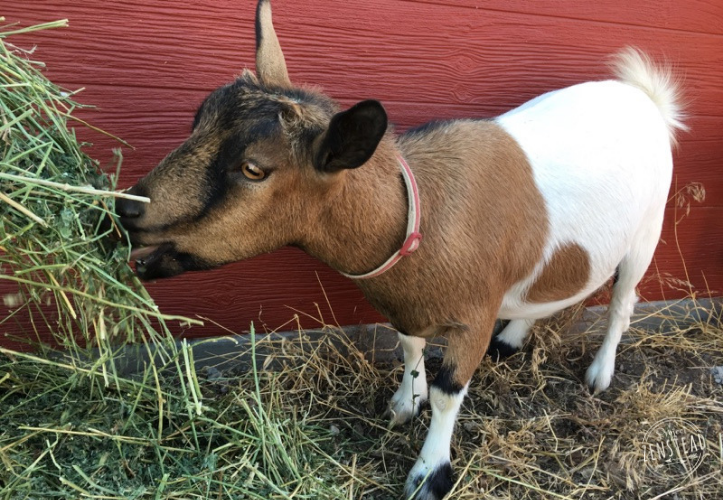
8. We started buying our chicken feed from a local mill to save money
The year before last, it wasn’t just the goats eating us out of house and home! As our chicken flock increased, so did our feed bill!
We were feeding our chickens Scratch & Peck chicken feed, which is a fantastic feed! It’s whole grain, non-GMO and certified organic.
Unfortunately, it was also $32 for a 40 pound bag.
We priced out the basic feed store brands, but they still cost $26 for a 50-pound bag of organic mash. While it was a slight saving, I really wanted to continue buying whole-grain feed.
Luckily, a local family farm (where we purchased many of our goats) started milling grains and feed mixes!
While the chicken feed isn’t certified organic, it is non-GMO, whole grain, and corn & soy free. They do custom blends and nutrition analysis on all their products.
Best of all: their feeds only cost $18 for a 50-pound bag!
The chickens love it and our money now supports a local family farm and our local economy! Win-win-win!
What have you done to save money on your homestead this year? Share your ideas with us in the comments below!
Pin for later!




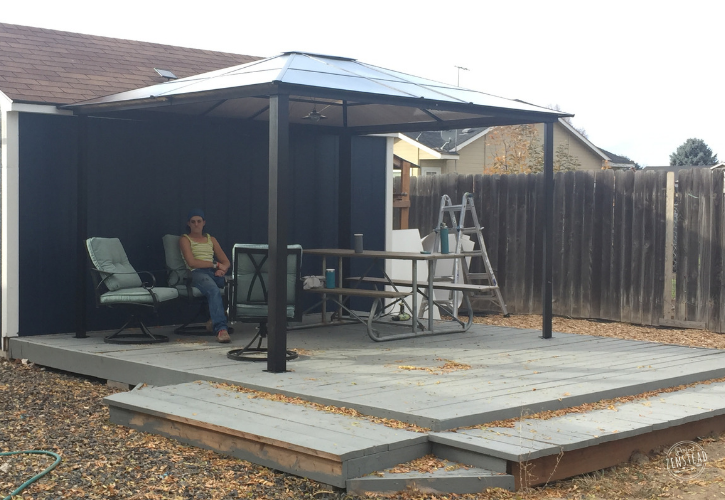
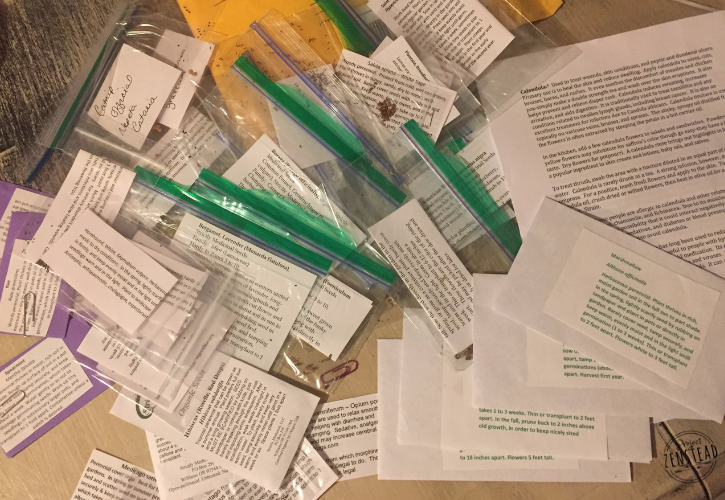

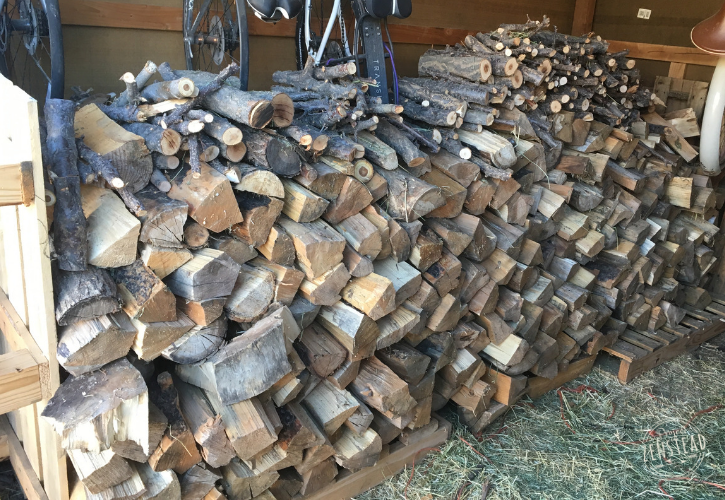
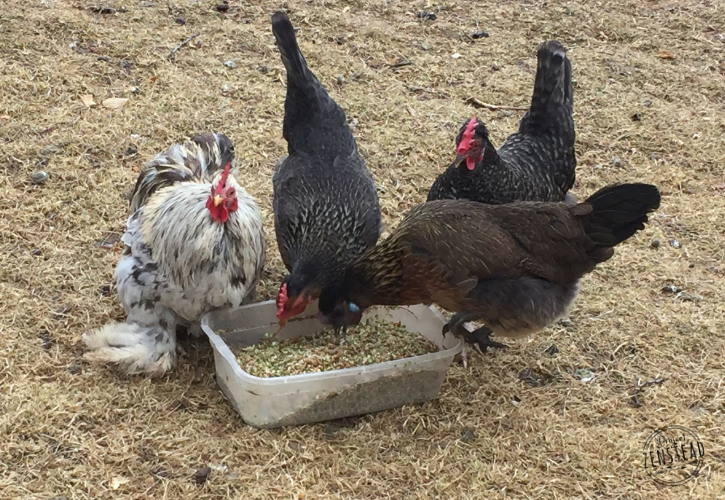
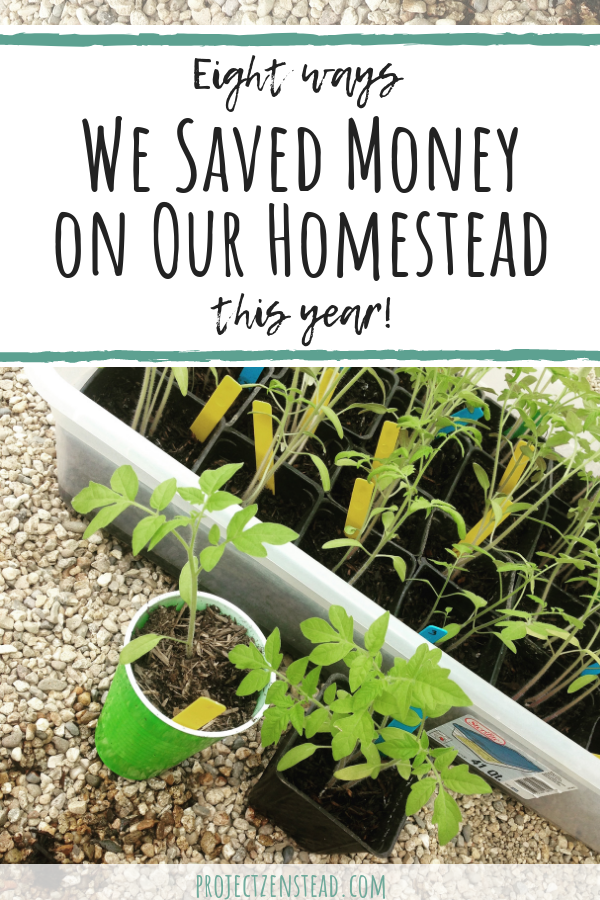



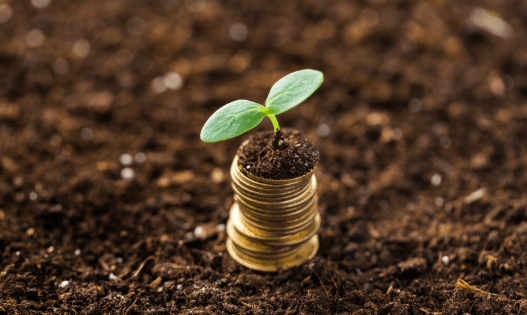
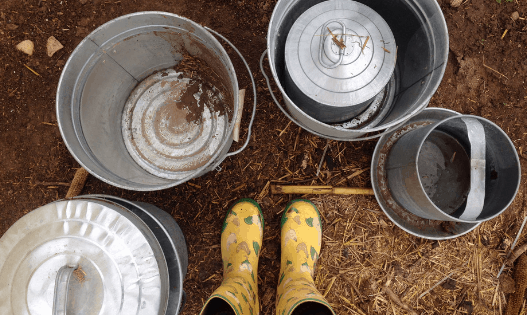
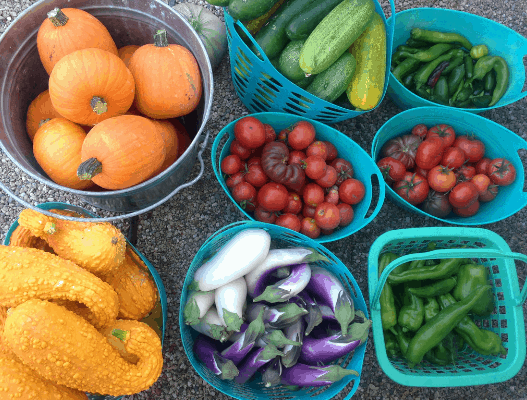
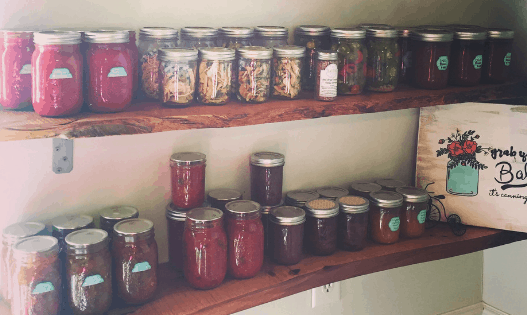
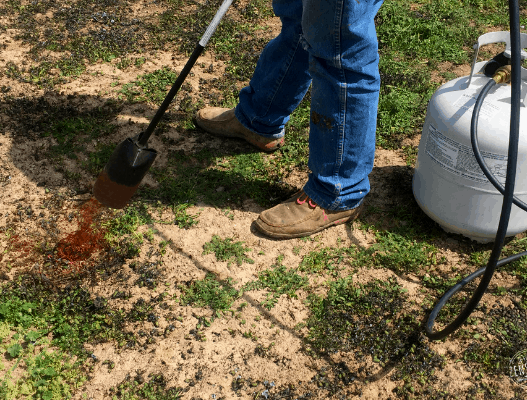
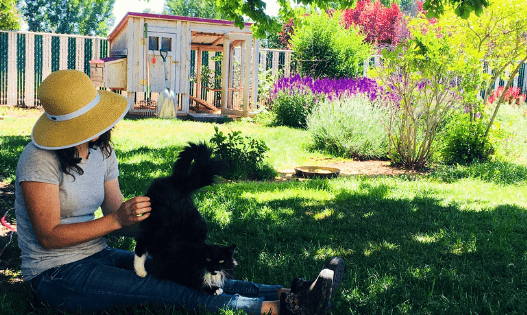

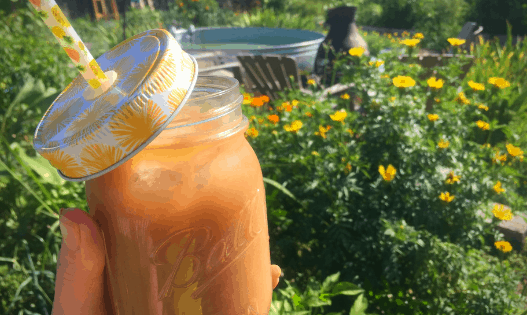
I purchased a Wize-way pellet stove for my heating. This stove uses no electric, running on gravity instead of having to have an auger, and there is no fan. I needed a goat barn, and when the school where I work needed to get rid of a parade float, I took that to use as a goat barn. I now have a really cool pirate ship that will be my goat barn as soon as the snow melts. They gave it to me for free because it was going to cost them $800 to take it to the dump. Talk about your win win! Now my goats will have a really cool play yard, and their own place that they don’t have to share with the chickens anymore. I am putting together a B&B on my forty acres of mature pine forest. The accomodations are tipis of varying sizes that I have made from a donated tarp that used to cover the gym floor of a local high school. I just have to build an outhouse that meets the specifications of the local government. I start my plants from seeds, I am planning a herb garden where I will grow enough to start my epothecary for myself… reducing the necessary dr and pharmacy visits, I will use much of my harvest to make soaps, lotions, shampoos etc for sale. My main harvest this year will be lufa. The plan is to have sponges to sell, and to infuse with soap so I will have ‘soap sponges’ to sell. With this plan in place, I expect to be able to support myself with my little homestead/b&b/campground. I also offer my place with its quiet trails and all the animals to veterans and first responders, at no charge. The ones who need a safe place to go but don’t do well with a structured organization. These people are ones who often fall between the cracks, and they are my main inspiration for setting up my homestead.
I love love love this!?? True homestead ingenuity at it’s best! It sounds like you really know how to make the most of all your resources! ♥️
Tell me about how you grew your luffas! I have never gotten them successfully to the stage of maturity and drying before winter sets in because of our short season – but I think your season is probably much shorter than mine! Maybe I need to start them when I start my tomatoes. Also, my goats would LOVE a pirate ship!?
Some changes we made:
1) swapped out the standard light bulbs in our house for LEDs. LEDs draw almost nothing compared with regular bulbs, are brighter, and last a lot longer.
2) replaced our rickety HVAC. Ours was running all the time in the summer. Not only did that waste electricity but we were uncomfortable!
3) caulked the window frames. What a difference!
4) expanded the chicken’s free-range area and give them a bit of fermented scratch each day. They are happier eating bugs than just feed and love the extra foraging space. And they get more more nutrients from the scratch when it’s been fermented – not to mention the probiotics!
5) started a couple of Hügelkultur beds. These are piles of compostable material that you use for planting. We built ours by stacking some old raised bed frames that we replaced. No need to turn the compost and once it breaks down, we’ll have lots of great compost.
6) over time, we replaced our old raised bed frames with ones that had hardware cloth on the bottom. (Pocket gophers were eating more than we were!)
7) planted lots of fruit trees and mulched under them. Pruning is a lot of work but we get more fruit than I ever imagined after just a few short years.
8) acquired a few large cold frames. It helps me get a few important plants outside earlier so I can conserve heat mat and grow light space for tomato starts. In the fall, the cold frames get moved to protect herbs so we can keep our rosemary and also have other herbs throughout the winter.
9) position bubble wrap against the glass of the top floor bedroom window for the summer. That room has a southern exposure and the bubble wrap insulates the window!
I LOVE all these ideas! There are just so many little changes that really add up to make a difference. You’ve done a great job seeing those little opportunities for improvement and changing them to improve your home and homestead! Bravo!
Such thrifty ideas — I’m impressed!
Maybe this year you can save your tomato seeds and not have to buy any packets at all next year 🙂
You can also keep extra seeds in a container in the refrigerator and they keep for years. Then there’s no need to buy new packets every year for the seeds you can’t save yourself.
Absolutely! I started getting really into seed saving last year. It’s so addictive! Like you said, it’s another great way to save money – and be more self-sufficient too! 😀